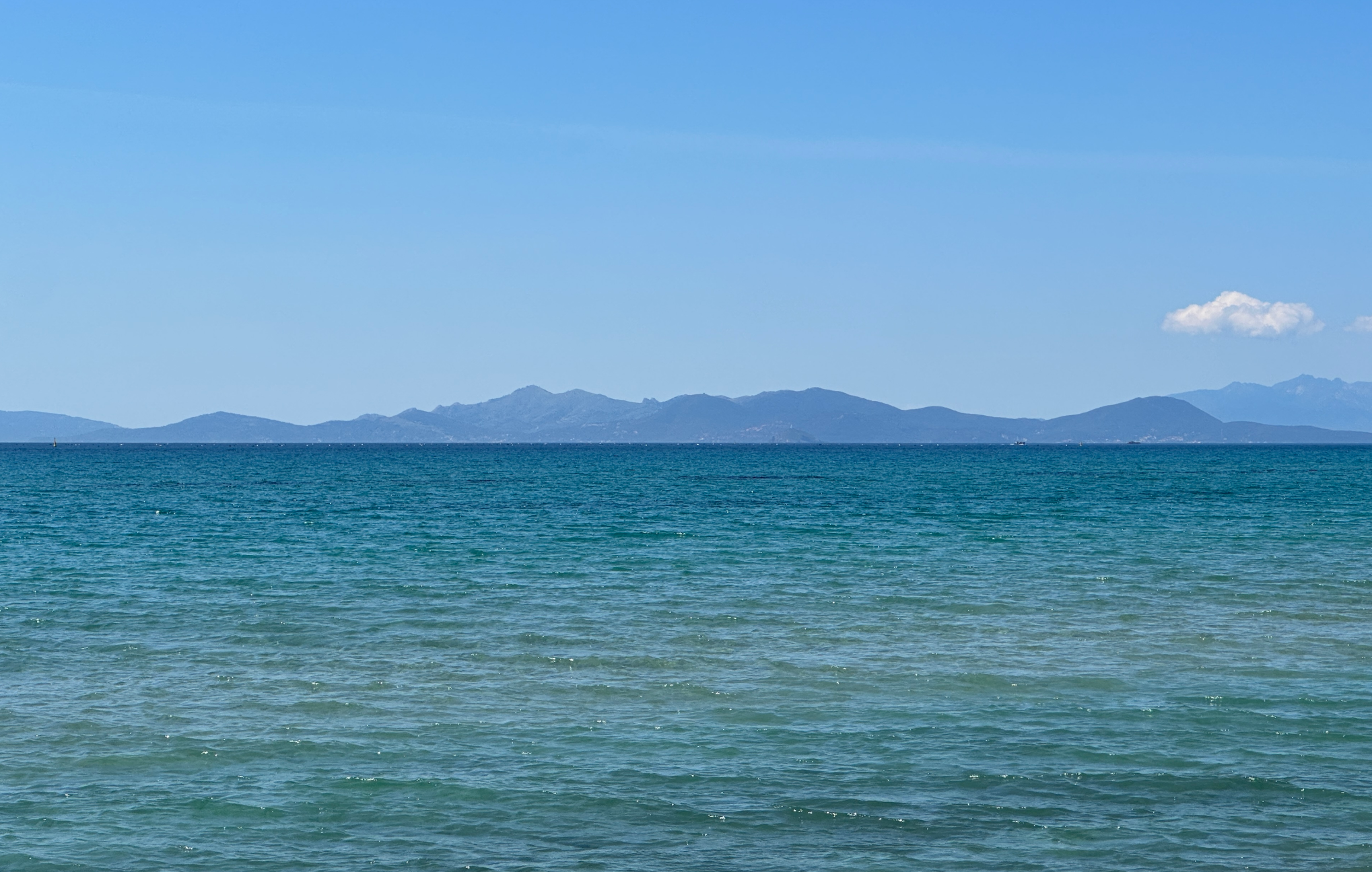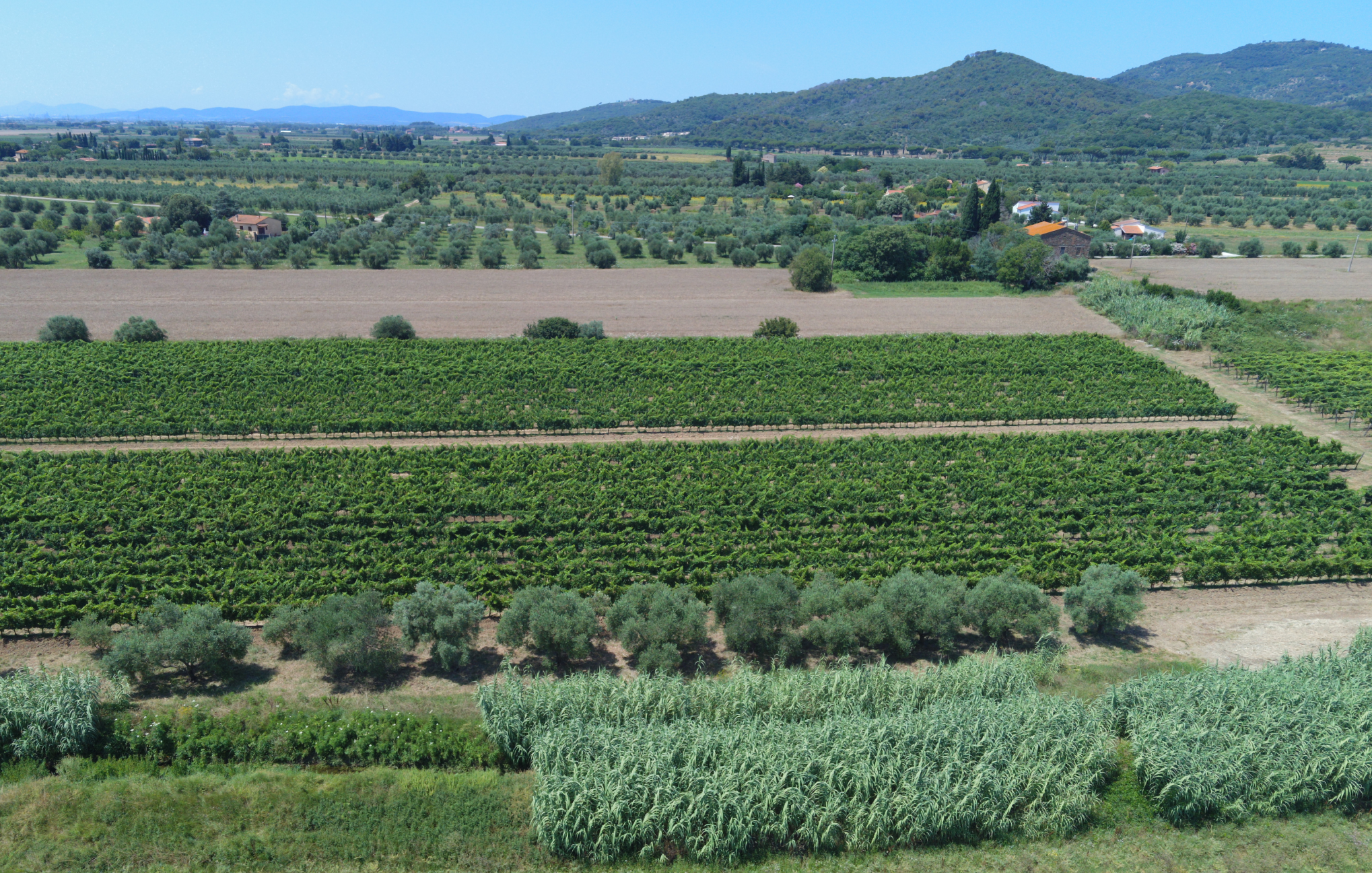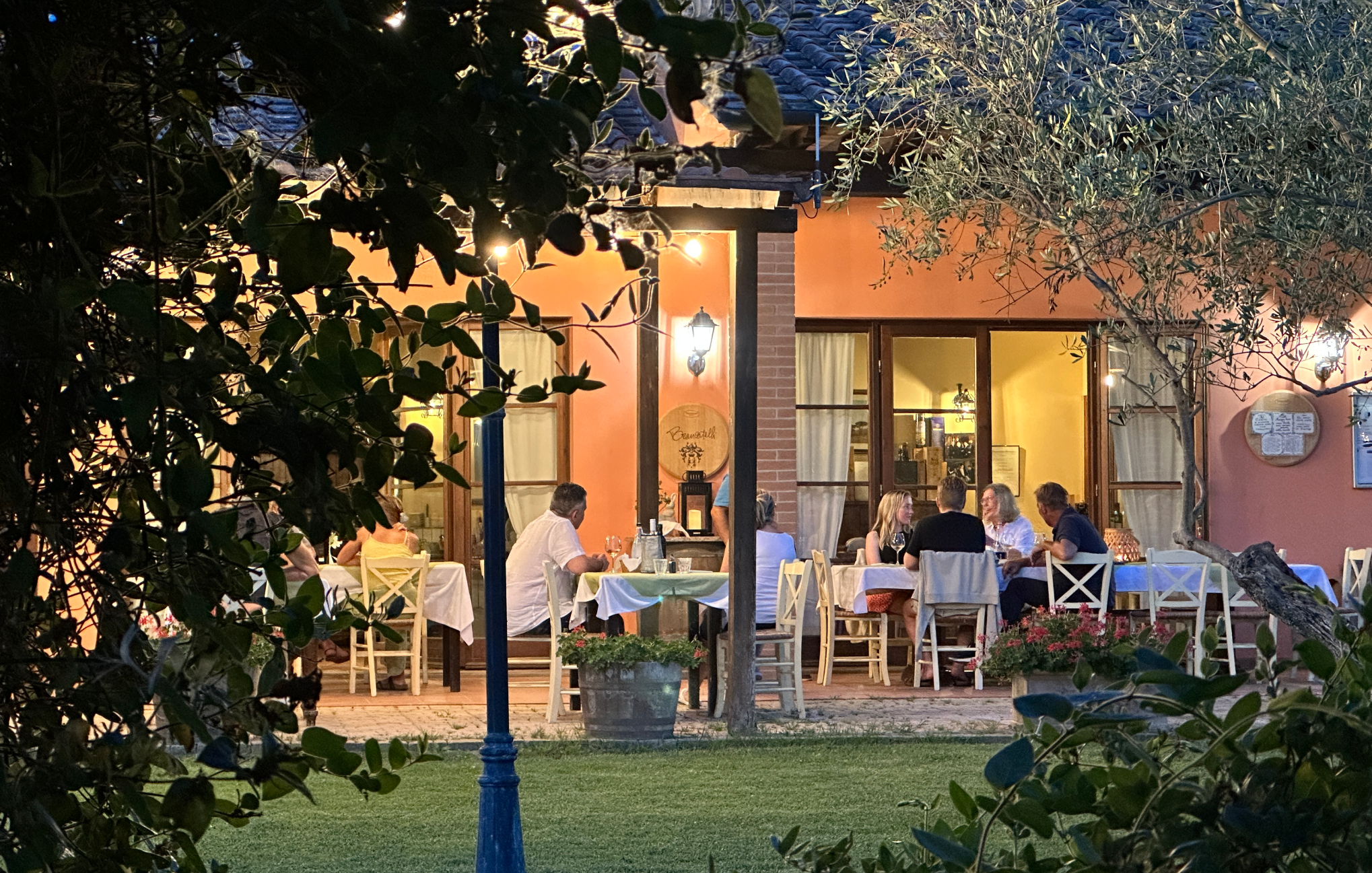THE PROCESS
LOCATION
The vineyard is located in the località ‘Pratini’ in the municipality of Suvereto, in the southern part of Tuscany, approximately 20 kilometres from the coast, just north of the island of Elba. A plot with huge potential, discovered after a very thorough soil analysis.
VINEYARD
The land was bought back in 2006 and was subsequently left open to breathe for a year, up to a metre in depth. The initial planting was done in 2007. The vineyard boasts an impressive surface area of 1.3 hectares. The soil is a combination of clay, old stones and sand. This has resulted in excellent drainage. The vineyard is located 300 metres above sea level. The vineyard management is in conversion to organic. The producers have already been working in line with this method, but they’re not (yet) certified. ‘We follow nature’. The first (small) harvest was completed in 2010. [The river Cornia flows along the vineyard, leaves silt behind, very fertile, calcium is good for red grapes]
GRAPE VARIETY
French cross with Grenache, after conducting some extensive research. This combination perfectly fits in with the terroir. Synonym: INRA 1810-68, obtained by Paul Truel in Montpellier in 1961 at the Institut de la Recherche Agronomique (INRA) and the Ecole Nationale Supérieure d’Arts et Métiers (ENSAM). Really with the objective of growing a productive variety with large grapes.
However, this cross actually resulted in small grapes and was subsequently neglected. But Marselan was ‘dug up’ once again and added to the official grape varieties register in 1990, due to the increasing demand for disease-resistant quality grapes. The name refers to Marseillan, the municipality along the Mediterranean coast between Montpellier and Béziers, where the INRA Montpellier grape collection can be found, at Domaine de Vassal.
The Marselan vines can live 100 years or more, but the Segreto producers keep them for a maximum of 50 to 60 years. Their Marselan is grown on an American rootstock, which they grow themselves. They opted to mention Cabernet Sauvignon on Segreto’s label due to the relative unfamiliarity with the grape variety.
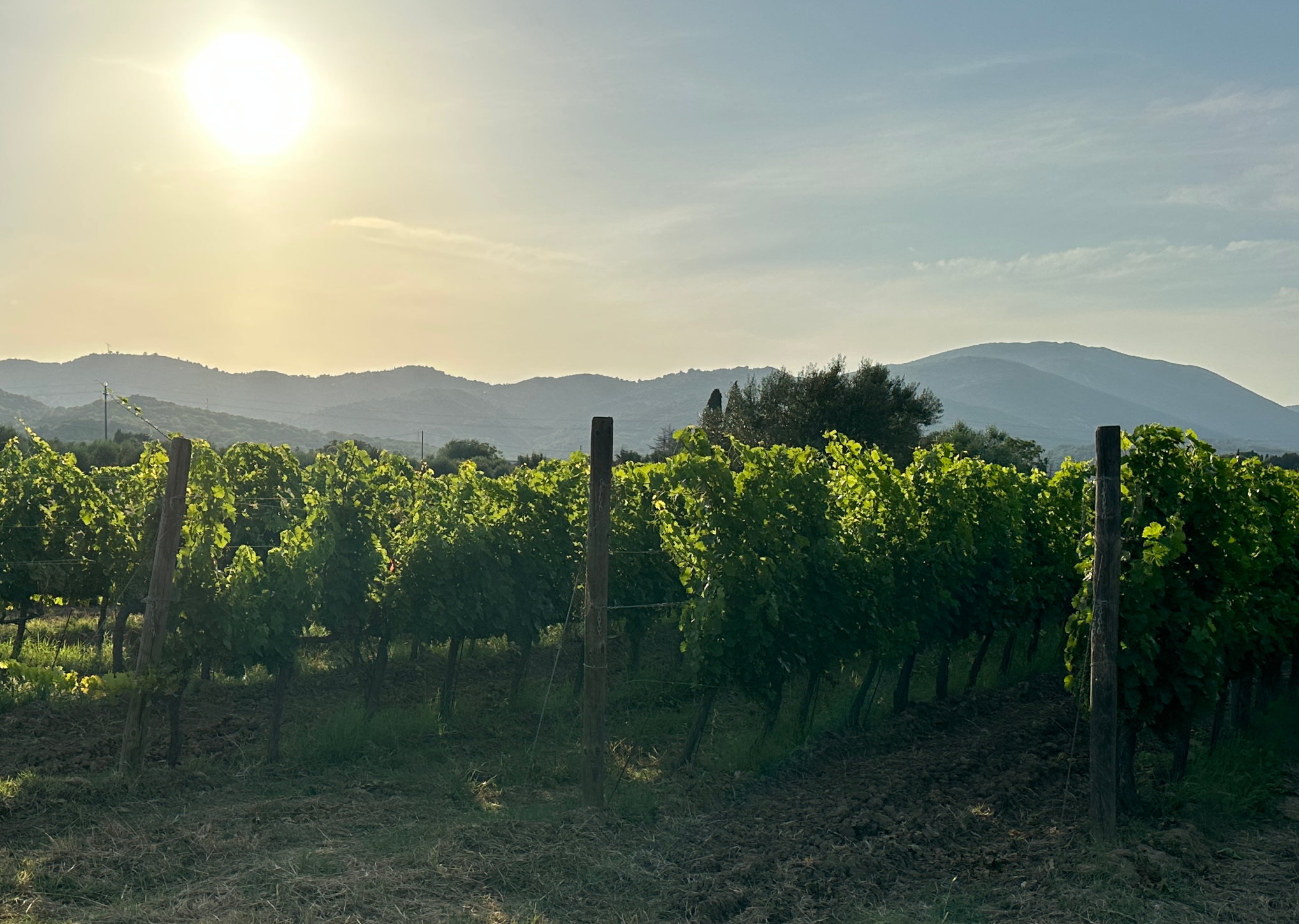
APPELLATION
Segreto is located within the borders of Suvereto DOCG (4). Although once a Val di Cornia subregion, it’s had its own appellation since 2011. However, Segreto has decided on a different quality label. Possibly a little headstrong, but a conscious choice which will allow us to chart our own course. Hence the IGT (Indicazione Geografica Tipica) qualification on the label. Definitely very appropriate within the context of wines which have been produced in a specific region, using international grape varieties.
PLANTING
The grape plants are tied and pruned in line with the following method: cordone speronato (spurred cordon/cordon trained and spur-pruned). Quite typical for central northern Italy. Or rather: Cordon de Royat.
(MICRO)CLIMATE
The sea’s influence is very important for the cooling process. The wind which blows across the seas has also brought sand and salt with it for millions of years, which plays a small role too. The vineyard is located approximately 20 kilometres from the sea.
VITICULTURE
Pruning is done in February/March as a result of climate change, as this is better for phenolic ripening: pruning at a later stage, growing at a later stage. Otherwise the grapes will simply ripen too early. Green harvesting (reducing the number of bunches and any excess leaves) is done in the spring. Harvesting takes place in September/October. This is done manually, in 10/12 kilo containers. This is usually done in three sessions: the southern part is the first to ripen. The grapes are then quickly taken to the winery before fermentation can start spontaneously.
VINIFICATION/AGEING
Spontaneous fermentation based on our own yeasts in stainless steel barrels. Marselan is a grape with a lot of tannins, so the skin maceration is a relatively short process before pressing starts. The juice, with little sulphite, then goes into 225 litre barriques, provided by Tonnellerie Taransaud. A famous cooperage launched in Cognac in 1940. There has also been a division in Beaune, Burgundy since 2000, in order to supply the regional top wineries. Part of Chêne et Cie.
The oak toast is tailored per individual harvest year, with a choice of medium or light. Never heavy. We also consider what’s needed in order to find the right balance between tannins, the fruit of the grape and the wood’s influence each harvest year. This ultimately determines the wine’s smell, taste, mouthfeel and colour. Making choices at the right times genuinely makes all the difference. The standard wood aging has been 24 months since 2015. And finally, the wine will continue to mature in the bottle for at least another 12 months.
APPROACH/INNOVATION
The wines were already sublime during the first 10 years, but it takes a long time before they’re ready to drink. This period is shorter now, with the focus on soft, noble tannins. We have increasingly worked towards those supple tannins over the years, especially since the arrival of Graziana Grassini in 2014. She has introduced a multitude of innovations, like cleaning the barriques every three months: washing and drying in order to prevent any possible brettanomyces (bacteria) and other wine defects. Segreto 2015 is her first vintage and 2017 is being considered a top year for the time being.
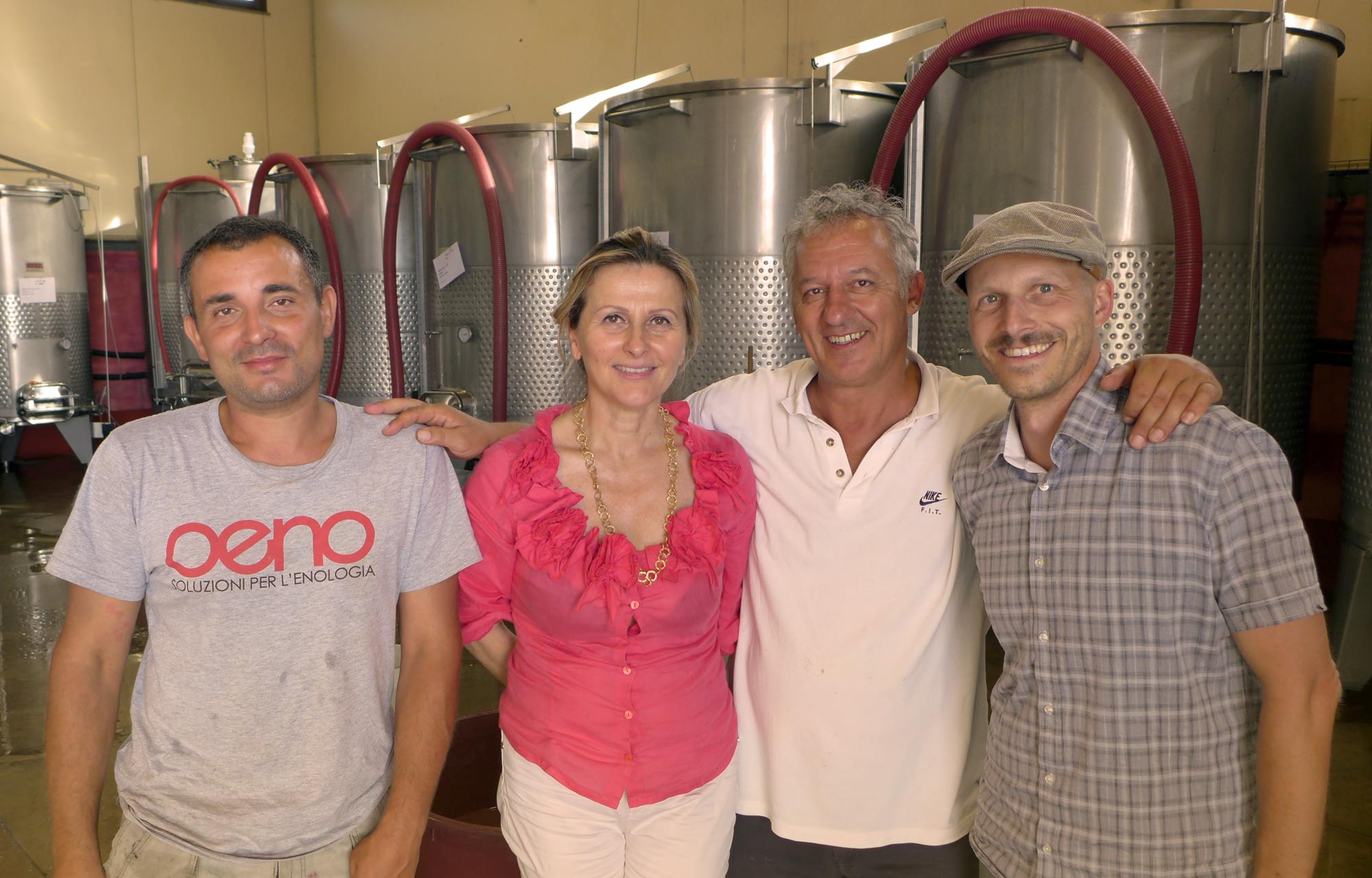
TEAM
All decisions are made by the team and collaborations are always focussed on quality. Producer Giuseppe Brancatelli, a Sicilian by birth, is at the base of this team, who boasts an impressive wine and catering career in the Netherlands. He owns Azienda Agricola Biologica Brancatelli, close to the Segreto vineyard and is very familiar with the ins-and-outs of the Tuscan landscape. The team also includes Gabriele Cesolini, an agronomist, and Alessandro Accetta, our in-house oenologist, who is responsible for the vineyards and winery. The final team member is external oenologist and biologist Graziana Grassini, the lady who single-handedly designed the most famous Bolgheri wine ever: Sassicaia.
